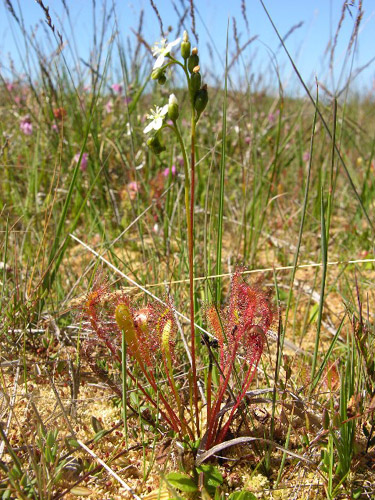
Foto : Jens Christian Schou/www.biopix.dk
Rubus chamaemorus (left picture) is widely distributed in the scandinavian bogs and oligotrophic fens but is very rare in Denmark. It is common in Lille Vildmose and has only a few other sites in northern Jutland and nothern Seeland.
R. chamaemorus is growing on the hillocks of the bog surface together with Calluna vulgaris, Erica tetralix, Andromeda polifolia, Empetrum nigrum, Vaccinium oxycoccus, Trichophorum caespitosum (picture below), Eriophorum angustifolium and E. vaginatum. Together with these few species of plants only some species of bog-mosses are common as Sphagnum magellanicum and S. rubellum.

